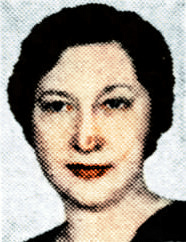Japs ape German tactics, attempt to scare Americans with loud noises, death threats
Bataan fell when troops were too weak to stand on their feet to fight
By H. R. Knickerbocker, Chicago Sun foreign service
H. R. Knickerbocker, noted correspondent, has just returned to the United States after covering the war in the Pacific for the last six months. He arrived in Hawaii shortly after the attack on Pearl Harbor and covered the ensuing battles in the Netherlands East Indies and down to Australia. This is the second installment of an article based on the large amount of material he gathered.

They were able to camouflage themselves so perfectly that when they climbed into a tree an observer could go to the foot of the tree, gaze closely at it and still not see them.
San Francisco –
The suicide tactics which the Japs so often use, and by which they waste lives needlessly, are purely their own tactics, but many of their battle practices are clearly borrowed from the Germans.
One of these is the use of terror. They intentionally add to the common terrors of the battlefield all kinds of shrewdly-invented devices to frighten the enemy, such as loud noises and vocal threats of death.
This the Germans did in France, when they used the shrieking bombs with whistles in their vanes, and loudspeakers to roar “Surrender!” at the bewildered enemy.
Japanese always insist that when they borrow anything from the Western world, they improve on it. Their improvement in this case could be conceded.
On the night before an assault, they ceased firing for some time. The silence of the grave descended upon the trenches. Only the nocturnal sounds of the jungle could be heard, as our soldiers strained their ears for the possible rustle of Jap scouts crawling through the wire.
But then, out of the eerie stillness came at once from many Japs a quivering cry, in a Filipino dialect. It was long drawn out and was so pitched that it could be heard all up and down the American lines. It was directed at our Filipino soldiers, but even an American with no knowledge of that cry knew that it meant death.
Its words were:
Patay na ikaw – Now you are going to die!
Like the wail of banshees, the threat of impending death came across the trenches again and again and again until the stoutest heart shivered, and battle-hardened soldiers moved closer together.
Noise mortars
Besides this trick, sometimes in the daytime, 1,000 Japanese soldiers would run out into the open and shout one stentorian war cry, then scurry back to their trenches. Many of them were equipped with trench mortars, small enough to be carried by one man as a part of his equipment. The mortar was not capable of doing much damage, but the noise of its detonation was terrific and the Japs calculated it helped rack the nerves of the enemy.
This was also the purpose of the special corps of snipers used by the Japs to infiltrate behind the American lines and harass us from the rear.
These men were the best-dressed and best-equipped troops on either side. Their forest-green broadcloth uniforms were of the best quality. They wore puttees and, even in battle, their shoes were shined. They were armed with their special .27 caliber rifle and 1,000 rounds of ammunition. They carried food for 10 days and what had been called the best camouflage equipment in the world.
They were able to camouflage themselves so perfectly that when they climbed into a tree, an observer could go to the foot of the tree, gaze closely at it and still not see them.
Fifth column big
But perhaps the most efficiently functioning element of the Jap offense was their fifth column, which the Americans on the Philippines called the best in the world. Its core consisted of two anti-American organizations which, though small in comparison to the vast majority of Filipinos loyal to the United States, were able to be all over the islands and signal the Japs every significant military secret of our men.
Both did murderous service against our troops. Every American position was outlined at night by red fire, discharged from small Very pistols by Jap agents who crawled into the lines. Even Corregidor, the great rock fortress in Manila Bay, had so many fifth columnists on it that every move of the garrison was signaled.
When all these elements are added to the fact that the Japs at one time landed 80 transports in Lingayen Gulf and must have had 200,000 or 300,000 men against our 100,000, it will be seen that the American Army did very well indeed to hold for five months. Our inferiority in numbers was matched by inferiority of the equipment of the Philippine Army manned by native Filipinos and organized by Gen. Douglas MacArthur in 1936.
We had a total of about 100,000 soldiers in the field, but of these, there was only one American regiment, the famous 31st Infantry, with 1,900 men.
Poorly equipped
Some observers regarded the Philippine Scouts, in the 57th Regiment commanded by Col. George S. Clark, and the 45th, commanded by Colonel John M. Doyle, as the most useful units. The Scouts were all Filipinos, lifetime professional soldiers, commanded by regular U.S. Army officers. But 88,000 of the 100,000 of the Army in Luzon were members of the Philippine Army with only a few months training, and with what has been described as utterly inadequate equipment. Many of them were without shoes, steel helmets, gas masks or entrenching tools.
But the little Filipinos were brave as lions. A classic instance was when Capt. Pennell reported to his commanding officer after an advance:
Casualties in the first 10 minutes 42%; casualties in the next 10 minutes 20%; total casualties 62%; unless I get help I must fall back to the reserve line.
Against this force, the Japs hurled the flower of their army, shock troops trained by four years of battle in China and the capture of Malaya. On March 22, they dropped messages to the Americans saying in effect:
Now you have defended yourselves honorably, surrender and we will treat you well; but if you do not do so, we shall bombard you for 11 days and nights and exterminate you.
They got the proper retort and on March 24, over an area 20 miles by 12 miles, they started their most intensive bombardment and artillery attack of the war and continued it for 15 days until April 9, when the starved, battered Americans, unable to keep on their feet, collapsed.
Eats horses
The Japs had unlimited supplies of food. The Americans were blockaded and save for one shipload of supplies, which crept into Cebu, they received nothing from the outside.
This was the deciding factor.
At the end of the five-month struggle, Gen. Wainwright had a list of 400 officers who were no longer fit for service.
The average loss of weight was about 25%. Men of 200 pounds wasted to 150. At the end, they had eaten all but 40 horses of the 26th Cavalry, a few mules and some water buffalo. Besides mule, horse and buffalo meat, they had toward the end absolutely nothing but rice. They had no salt or other condiments, and unsalted rice and mule meat is said to be so unpalatable that even a starving stomach rejects it.
And besides their own men, the Army had to feed 12,000 civilians in Bataan.
Throughout it all, what sustained them was their unshakable conviction that reinforcements and supplies were on their way from the United States.
Jap losses high
Perhaps they did not understand the facts of the war in the Pacific, but the fact of their faith in the United States is something that will go down in our history as heroic.
They inflicted tremendous losses on the enemy. Some company commanders estimated the Japs lost from 50 to 300 dead for one American. One officer could see from his observation post literally heaps of Jap dead, in front of his lines, “like flies.” When the Japs stormed the Abucay Line, they must have lost three or four divisions in that sector alone. 30-40,000 dead Japs is an estimate made by many who ought to know.
But why did Corregidor fall? Was it not considered impregnable?
The answer of those who know because they were there is that nothing is impregnable. Bataan fell because starving men were too weak to stand on their feet, and the Japs simply flowed over them like a cascade.
After Bataan fell, the defense of Corregidor became impossible because the Japs could pound it point-blank from only 2½ miles away. By incessant firing at the tunnels, they could seal them as effectively as though they had been blocked by a landslide.
Added to that was the fact, certainly not realized by the lay public at home, that the main guns of Corregidor were trained only toward the sea and could not fire at Bataan.
Hero Wainwright
Out of the whole picture of the last days of the disaster emerges a man whom his soldiers adored.
Lt. Gen. Jonathan Mayhew Wainwright, assigned the heartbreaking duty of defending a lost cause, was the inspiration of those final hours. His nickname was “Skinny” to begin with, but after months of starvation, he had become stooped, thinner than ever, and when last seen on Corregidor, he was like a ghost.
As he walked around the island supervising, encouraging the defenders of the forlorn hope, he had to use a cane and dragged his right leg. Despite that, on April 4, 6 and 7 or until two days before the fall of Bataan under the torrent of Japanese, Gen. Wainwright was on Bataan organizing the defense, cheering the troops.
It was of no avail, for on April 7, he had to admit that if his men could not walk 50 feet to take up their positions from which they were to jump off to the attack, there was not much use in pretending to oneself any longer.
He had to do what he had foreseen when he wrote in his diary:
If the capitulation of Corregidor finally becomes necessary, I will surrender with my troops unless I am ordered to leave them by the President of the United States. I would consider it the height of dishonor to do otherwise.


